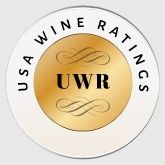Warehouse
Open from Jan 1st - July 10th 2026
Judging
Date
July 27, 2026
Winners
Announced
August 12, 2026

Here’s the challenge facing every producer, retailer, restaurant, or bar owner that is trying to sell wine in the world. Only 18% of the people you are trying to sell wine really know what they are doing when it comes to buying wine. Of which only 3% would classify themselves as being connoisseurs, according to the Sonoma State University’s Wine Business Institute.
Buying wine, for the majority of people, is the equivalent of entering a consumer’s version of a live minefield, where all you are trying to do is get through it as safely as possible. What you ideally want is someone to take you by the hand and act as your navigator, helping you pick out a bottle that you and your friends, or family, will like, at a price you don’t mind paying for it.
 This is what the USA Wine Ratings competition is all about. Giving all wine drinkers, whatever their knowledge or confidence, the chance to judge one wine over other thanks to the medal it has won. Whether it is a Gold, Silver, or Bronze, having a medal can really make a difference when standing out on a shelf or on a restaurant’s wine list, says the Sonoma State University research.
This is what the USA Wine Ratings competition is all about. Giving all wine drinkers, whatever their knowledge or confidence, the chance to judge one wine over other thanks to the medal it has won. Whether it is a Gold, Silver, or Bronze, having a medal can really make a difference when standing out on a shelf or on a restaurant’s wine list, says the Sonoma State University research.
But not all ratings and medals are judged using the same criteria, so it is important to know what it is a particular competition or event is rewarding a wine for.
The USA Wine Ratings competition, for example, has been designed to judge a wine in the same way the average consumer would. By how much it costs, what it looks like on the shelf, and what it tastes like. All three factors are taken into account when choosing which medal every wine is given - or not.
This is completely at odds as to how the vast majority of international wine competitions are organized. For them, the only important factor, or criteria, is how it tastes and what quality score its judges will give a particular wine. End of story.

A buyer looking at wine bottles in the store
In the USA Wine Ratings competition that is when the story begins. Yes, all wines are still judged blind, as with all other competitions, so that the judges are not swayed by a country, region, or price. But, crucially, the wine and its label and packaging are then revealed to the judges so that they can then assess just how the quality of wine is matched by what it looks and feels like, and arguably most important of all, how much it costs. For, according to the Sonoma State University research, price is by far the most important factor for 80% of consumers.
Other academic papers have revealed just how important it is to get the packaging and wine labels right, just as it is in any consumer goods category. “Country of origin and brand were the most important cues on front labels, while wine style and descriptions were important attributes on back labels,” is the conclusion, for example, that Nelson Barber MS and Barbara Almanza came to in their study of consumer decision making in wine.
This is also where the judges for the USA Wine Ratings competition come in. Everyone on the judging panel has got professional wine buying experience and is responsible for deciding what wines are going on sale in retail shops and restaurants and bars across the country.
These are the wine buyers with the experience, knowledge, and know how to be able to taste and score a wine on its quality, and then, crucially determine how that then compares to the price being asked for it and the label and packing being used to promote and, effectively sell it.
Three sides to a coin that will ultimately determine what sort of medal that wine should receive.
This is why the judges of the USA Wine Ratings competition are so pleased to be involved in an event that respects and mirrors how they work. The sort of hard commercial decisions they have to take every day when assessing the 1000s of bottles of wines that come across their desks.

Judges at the previous event
The decisions they take when judging the USA Wine Ratings can also have a dramatic impact on the fortunes of the wines that end up with medals. Research around the world has shown that gold medal-winning wines can see an increase of 200% or more in sales on the back of winning gold - some can increase by nearly 700%.
It’s why so many wine producers will enter wines into competitions they trust as it is a key part of their marketing and promotional activity for the year.
Winning a gold medal can also give producers the evidence they need to up their prices. A study by the American Association of Wine Economists shows Bordeaux wine producers have successfully raised their prices by as much as 19% on the back of winning a gold medal, with an average price increase of 13%.
Ultimately the USA Wine Ratings is there to help all consumers, wherever they are in terms of wine knowledge, make better decisions about the wines they are buying. Knowing a Gold, Silver, or Bronze medal-winning wine has been given that score by a professional wine buyer based on its quality, price, value for money, and what it looks like is a lot more reassuring than just going on gut feel.

USA Wine Ratings Gold, Silver, and Bronze Medals
* For more details about the USA Wine Ratings competition click here.
Grow your wines in the off-premise channels of the USA. The Early Bird submission deadline is February 20, 2026, and the domestic submission deadline is June 30, 2026. Here is how to enter.